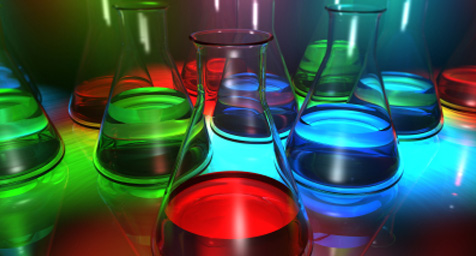How Colors Can Color User Behavior in Branding and Web Design

Did you know that the hues you choose in your marketing can affect everything from consumer perception to purchasing decisions and brand preference? Once a matter of mere aesthetics, now color is based in psychology and a simple hue can cue millions of people to buy and believe in a brand. Now marketers have it made in the shade since they’ve learned how colors can paint our perceptions. To show how colors affect whether we buy, try, or walk on by, FastCompany.com featured a spectrum of colorful facts.
There has been an abundance of research about color psychology and how different colors make us feel different ways about a brand and its products. Simply seeing these colors triggers us to attribute certain qualities to a brand. As a result, companies must be very careful about the hues they choose to use in their branding because their palettes can affect our perceptions and purchases.
For example, blue is the hue of credibility, trust, and professionalism. It is often used by medical, corporate, government, healthcare, and high-tech brands to convey confidence, strength, and experience. And green is a tint that hints of natural, organic, youthful, ecological, and calming qualities. It’s favored for medicine, tourism, eco-friendly, and socially minded businesses since it presents a sense of health, growth, and vitality.
Moving beyond initial impressions, color can also play a major role in our buying behavior. How can a simple shade affect how we spend? Colors speak to us sub-consciously and we naturally associate certain colors with various social and cultural messages.
The color red increases your heart rate and creates a sense of urgency. Black exudes luxury and power, which is why it’s often used by upscale brands and usually makes us spend more. Purple is a soothing shade that inspires relaxation, while yellow is used to grab attention in an upbeat, cheerful way. Next time you’re in stores, notice how brands strategically use these subtle, subliminal color cues and see how they make you respond.
And color can also set the tone on your websites and apps. There have been many tests and experiments on how certain colors affect conversion. While their findings span the spectrum, there’s no denying that certain colors affect response and results. The best way to know what’s right for your site is to test out different colors for your buttons, call-outs, and backgrounds and then compare your conversion rates.
And if you’re building an app that targets women, research shows that ladies love blue, green, and purple but frown upon brown, orange, and gray. But targeting men demands a different palette since guys go for black, blue, and green, but aren’t fond of purple, brown, and orange.
Color is clearly a force and a source of marketing power. When you use it wisely, it can color your success.
Tap into a spectrum of marketing and branding insight. Contact MDG.
MDG, with offices in Boca Raton and New York, NY, is a full-service advertising agency and one of Florida’s top branding agencies. MDG’s core capabilities include print advertising, branding, logo design, creative, digital marketing, creative media planning and buying, radio and TV advertising, Web design and development, content marketing, email marketing, social media marketing, and SEO. To stay on top of the latest trends in marketing and advertising, contact MDG. For a look at the colors that defined each of the last five decades, check out this infographic, “A Celebratory Look at How Pantone Has Colored the Last 50 Years.”
